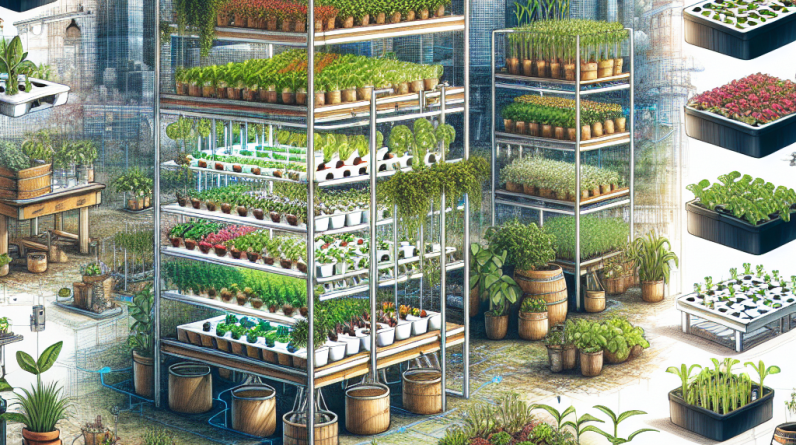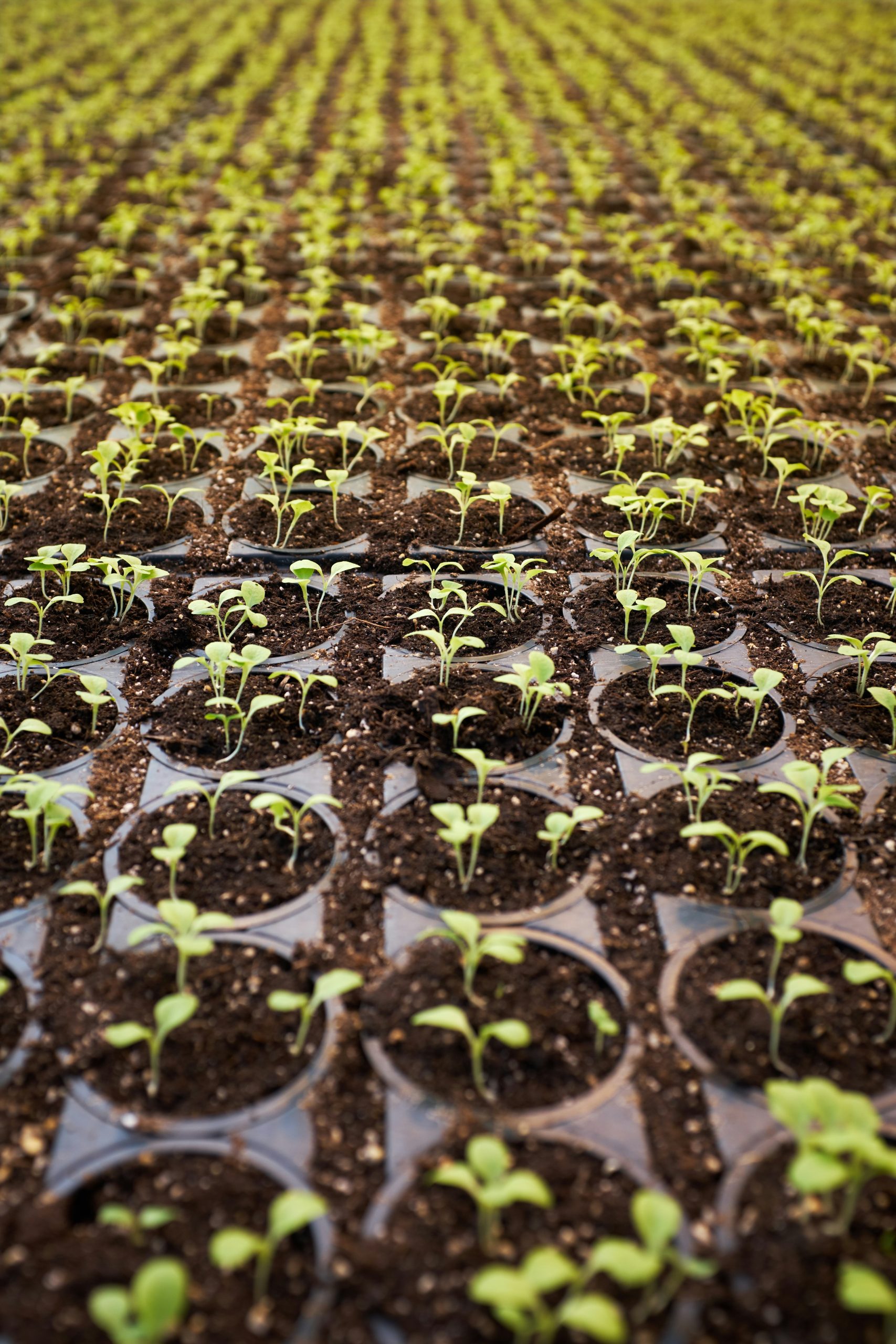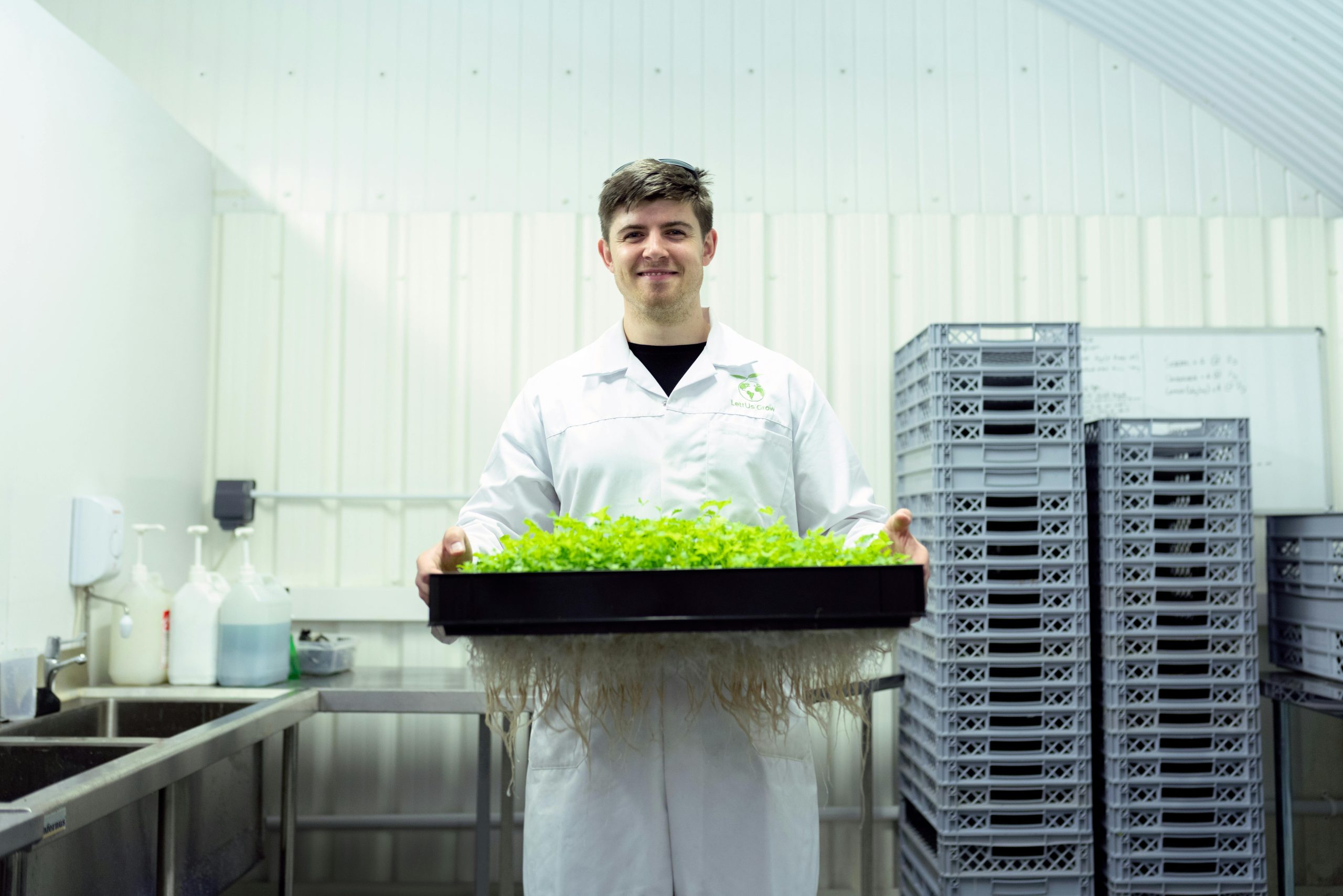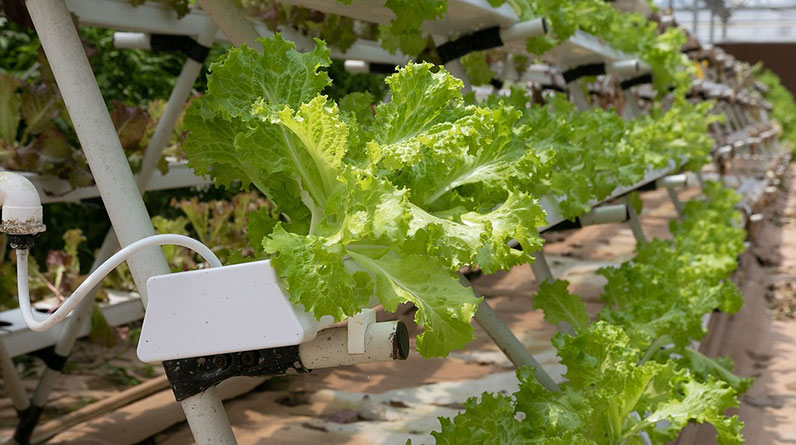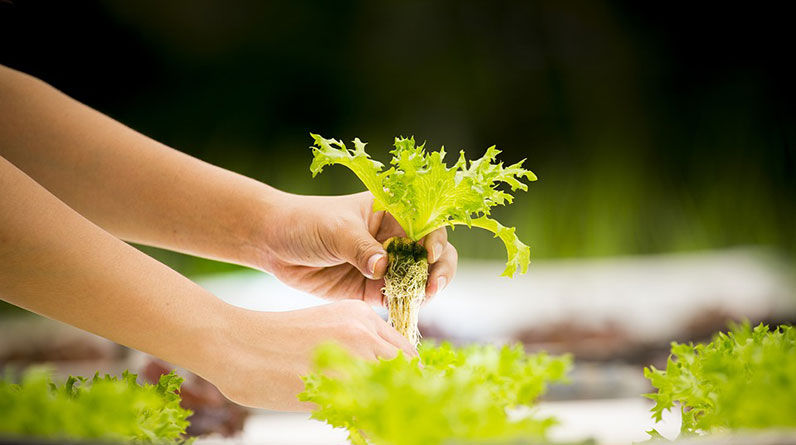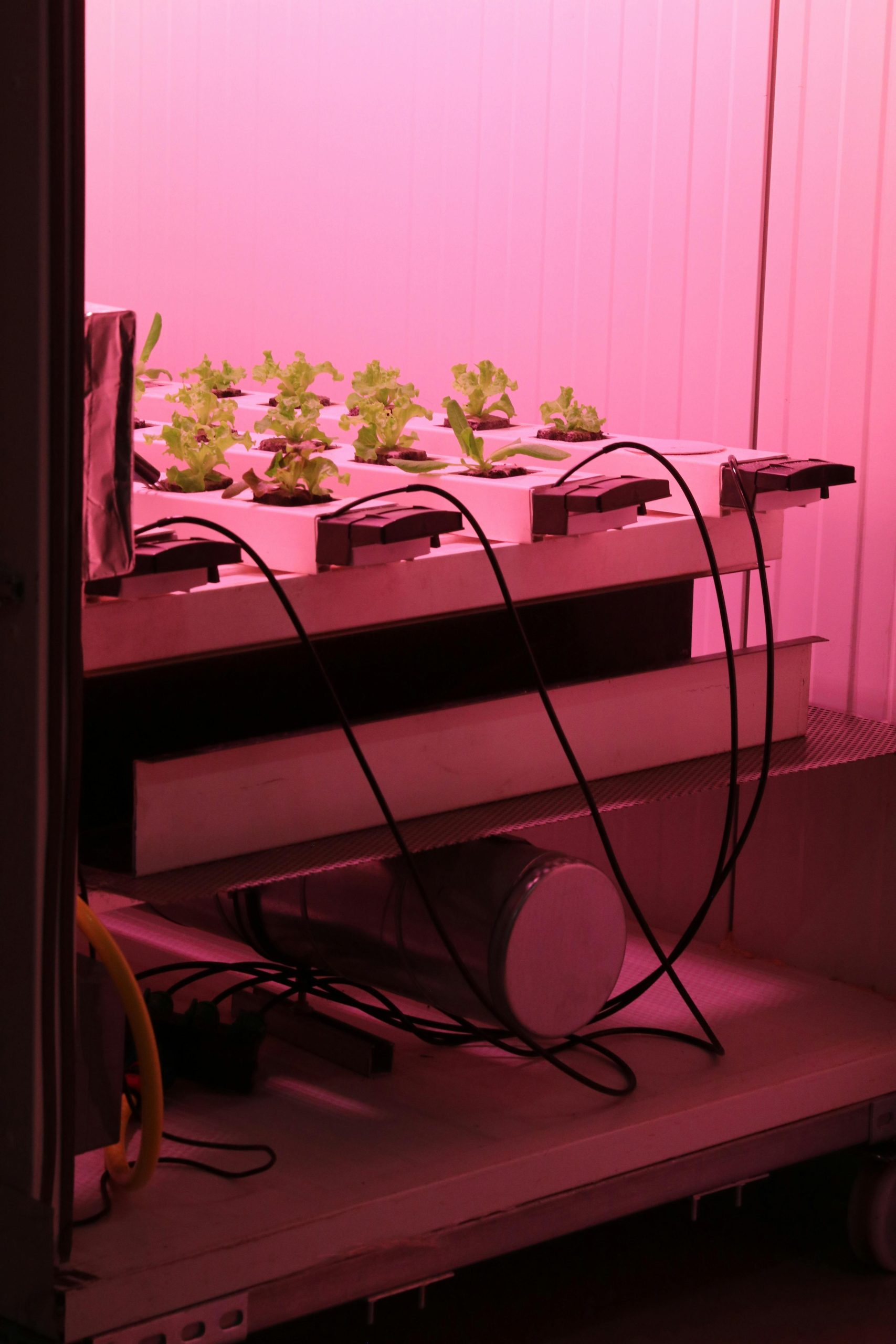
Table of Contents
- 1. Basil
- 2. Mint
- 3. Cilantro
- 4. Parsley
- 5. Chives
- 6. Oregano
- 7. Thyme
- 8. Rosemary
- 9. Thai Basil
- 10. Lemongrass
- Frequently Asked Questions
In 2025, growing hydroponic herbs indoors has become one of the most convenient and sustainable ways to enjoy fresh herbs year-round. Whether youâre limited on space or simply want to minimize soil mess, hydroponic systems offer an efficient alternative. They allow herbs to thrive in controlled environments, delivering rapid growth and higher yields compared to traditional soil gardening. If you’re eager to bring a fresh herb garden into your home this year, this guide will walk you through the ten best options for hydroponic herbs indoors in 2025, with actionable tips to help you succeed. Let’s dive into the top herbs that are making waves in indoor hydroponics!
1. Basil
Why Basil Is Perfect for Hydroponic Growth
Basil remains one of the most popular herbs for hydroponic herbs indoors because of its fast growth and versatility in the kitchen. In 2025, new nutrient formulations enhance basilâs flavor and aroma, making it a top choice for indoor gardens. Basil thrives in warm, well-lit environments and can be harvested within 3-4 weeks, ensuring a continuous supply.
Using hydroponics eliminates common soil pests and diseases that can hinder basil growth. Plus, controlled nutrient delivery results in bright green, healthy leaves with maximum flavor potential. Whether you’re growing Genovese or Thai basil, the cropâs rapid turnover makes it ideal for indoor settings.
Tips for Growing Basil Hydroponically
- Ensure at least 16 hours of LED grow light daily for optimal photosynthesis.
- Maintain water pH around 5.8 to 6.5 for maximum nutrient absorption.
- Replace nutrient solution every two weeks to prevent buildup of salts and pathogens.
Experimenting with different basil varieties can keep your indoor herb garden exciting. Fresh basil harvested from home hydroponic systems in 2025 will elevate your dishes and reduce trips to the store.
2. Mint
Why Mint Is Ideal for Indoor Hydroponics
Mint is a hardy herb that responds exceptionally well to hydroponic systems. Its vigorous root system can adapt to various hydroponic setups, making it a popular choice among indoor gardeners in 2025. With minimal care, mintâs lush, fragrant leaves flourish. The herb’s fast growth rate means you’ll enjoy fresh supplies regularly.
Growing mint hydroponically eliminates soil-borne pests and reduces water use. Itâs also highly tolerant to fluctuations, making it suitable for beginner gardeners eager to try hydroponic herbs indoors.
Care Tips for Mint Hydroponics
- Provide at least 12-14 hours of light daily for continuous growth.
- Maintain water temperature between 65-75°F for healthy roots.
- Prune regularly to encourage bushier growth and prevent legginess.
Fresh mint from your indoor hydroponic garden in 2025 can be used in teas, cocktails, or garnishes, demonstrating how effective hydroponics are for aromatic herbs.
3. Cilantro
Cilantroâs Growing Needs in Hydroponic Systems
Cilantro, essential in many cuisines, benefits greatly from hydroponic cultivation indoor settings. Its delicate leaves grow rapidly under controlled nutrient conditions, often within 3-4 weeks. In 2025, improved hydroponic nutrient mixes enhance leaf flavor while reducing boltingâa common challenge with cilantro.
Growing cilantro hydroponically allows you to enjoy fresh, vibrant leaves year-round, regardless of outdoor weather. Its roots prefer cooler temperatures, so an indoor environment maintains optimal conditions.
Practical Tips for Indoor Cilantro
- Keep daytime temperatures between 60-75°F to prevent bolting.
- Use a hydroponic system with good aeration for healthy root development.
- Adjust pH levels between 6.0 and 7.0 for best growth.
By 2025, hydroponic cilantro is a must-have for any home chef seeking fresh herbs without pesticides or soil dependency.
4. Parsley
Growing Parsley Hydroponically Inside
Parsley, a culinary staple, benefits from the precise environmental controls of hydroponic systems. Indoor hydroponic parsley grows lush and vibrant, often within 3-4 weeks. In 2025, nutrient formulations optimize flavor and increase nutritional content.
Parsley prefers moderate light and consistent moisture. Hydroponics ensures that roots get a steady supply of nutrients without the variability of soil, leading to more flavorful, non-bitter leaves.
Cultivation Tips
- Use grow lights for 12-14 hours daily to promote lush foliage.
- Maintain pH around 6.0-7.0 for optimal nutrient uptake.
- Prune regularly to encourage bushier growth.
Freshly grown hydroponic parsley in 2025 will elevate your salads, garnishes, and cooking with minimal fuss.
5. Chives
Chivesâ Benefits in Indoor Hydroponics
Chives are among the easiest herbs to grow hydroponically indoors, thanks to their hardy nature and compact growth habit. They are perfect for small spaces in 2025 and respond well to continuous harvesting.
Indoor hydroponic chive systems support steady green growth and maintain their flavor profile longer compared to outdoor counterparts. Theyâre also highly nutritious, packed with vitamins and antioxidants.
Growing Tips for Chives Indoors
- Provide 12-16 hours of bright light daily.
- Maintain water pH around 6.0-6.5 for healthy root development.
- Harvest frequently to encourage bushier regrowth.
By 2025, chives are a staple for culinary use and easy care, making them an ideal hydroponic herb indoors.
6. Oregano
Oregano in Indoor Hydroponic Gardens
Oregano is a fragrant and flavorful herb that adapts well to hydroponic systems, providing fresh supply year-round in 2025. Its bushy growth and aromatic leaves make it a favorite for Italian and Mediterranean cooking.
Growing oregano hydroponically reduces the likelihood of soil-borne pests and allows for more control over moisture and nutrients. Itâs also robust and low-maintenance, perfect for beginners.
Cultivation Tips
- Ensure plenty of lightâat least 14 hours of LED exposure daily.
- Maintain pH levels between 6.0 and 8.0.
- Prune regularly to develop a dense, bushy plant.
Fresh oregano from your indoor hydroponic setup in 2025 will flavor your dishes and fill your home with inviting aromas.
7. Thyme
Growing Thyme Hydroponically Indoors
Thyme is a versatile herb that benefits from a well-maintained hydroponic environment. Its drought-tolerant nature makes it suitable for indoor systems that mimic its Mediterranean origins, especially in the controlled climate of 2025.
Thyme roots prefer well-drained conditions, and hydroponics can provide exactly that, leading to concentrated flavor and healthy green growth. Harvesting thyme regularly promotes dense foliage.
Care Tips for Indoors
- Provide 12-15 hours of light daily with high-quality grow lights.
- Maintain pH around 6.0-7.0.
- Ensure good air circulation to prevent fungal issues.
In 2025, hydroponic thyme is a reliable herb for culinary, medicinal, and decorative purposes inside your home.
8. Rosemary
Indoor Hydroponic Rosemary: A Fragrant Choice
Growing rosemary hydroponically indoors is increasingly popular in 2025 due to its strong aroma and culinary uses. While traditionally a woody shrub, modern hydroponic techniques allow rosemary to stay compact and manageable inside small spaces.
Rosemary prefers a bright environment with plenty of light and warmth. Proper nutrient management in hydroponic systems results in fragrant, needle-like leaves perfect for seasoning and infusions.
Growing Tips
- Provide at least 16 hours of high-intensity light daily.
- Keep water pH around 6.0-7.0.
- Use well-draining hydroponic mediums to prevent root rot.
In 2025, indoor hydroponic rosemary will add both fragrance and flavor to your culinary herbs collection.
9. Thai Basil
Authentic Flavor from Hydroponic Thai Basil
Thai basil is an essential herb for many Southeast Asian dishes, and growing it hydroponically indoors in 2025 allows chefs to enjoy authentic flavors year-round. Its vibrant purple stems and aromatic leaves are especially suited for hydroponic growth due to its rapid germination and high yield.
Indoor systems provide stable conditions, reducing pests and bolstering flavor development. Additionally, hydroponic Thai basil can be harvested repeatedly, making it a cost-effective choice.
Growing Tips
- Ensure 14-16 hours of intense light daily.
- Maintain pH between 6.0-6.5 for healthy growth.
- Regular pruning encourages bushy plants and more leaves.
By 2025, hydroponic Thai basil is an excellent addition for culinary enthusiasts seeking fresh, spicy herbs at home.
10. Lemongrass
Growing Lemongrass Hydroponically Indoors
Lemongrass is a staple in Asian cooking, and in 2025, indoor hydroponic systems make growing this tall, fragrant grass accessible to everyone. Its strong citrus aroma makes it a popular herb for teas, soups, and marinades.
Hydroponics provide optimal moisture and nutrients to support rapid root and shoot growth, even in small indoor setups. Regular harvesting of lemongrass stalks ensures continuous growth cycles.
Care Tips for Indoor Lemongrass
- Require 12-14 hours of bright light daily.
- Maintain consistent water supply with pH around 6.0.
- Prune to shape and encourage new shoots.
In 2025, having fresh lemongrass on hand adds a fresh twist to your culinary creations and makes hydroponic herbs indoors a flavorful success story.
Conclusion
Embracing hydroponic herbs indoors in 2025 unlocks a new level of fresh, sustainable, and easy-to-manage herb cultivation. Whether you’re growing aromatic basil, zesty cilantro, or flavorful oregano, indoor hydroponics provide optimal conditions for rapid, high-quality growth. This guide has highlighted the top ten herbs that can thrive inside your home, offering convenience and flavor at your fingertips. Start your hydroponic herb garden today and enjoy the bounty of fresh herbs all year long!
Frequently Asked Questions
1. What are the main benefits of growing hydroponic herbs indoors in 2025?
Hydroponic herbs indoors in 2025 offer faster growth, higher yields, less pest issues, and the ability to grow herbs year-round regardless of outdoor weather. They also require less space and water, making them environmentally friendly and convenient.
2. How do I choose the right hydroponic system for herbs?
Choose a system based on space, budget, and the specific herbs you want to grow. Popular options include deep water culture, nutrient film technique, and ebb and flow systems. Each offers different benefits in terms of maintenance and growth rate.
3. Can I grow all types of herbs hydroponically indoors?
While most herbs adapt well to hydroponic systems, some like rosemary and lemongrass require specific conditions. Itâs best to research individual herb preferences and choose suited hydroponic setups to maximize success.
4. How do I prevent pests and diseases in hydroponic herbs indoors?
Maintain a clean growing environment, monitor water quality regularly, ensure proper airflow, and use sterile nutrient solutions. In 2025, integrated pest management techniques and innovative sterilization methods make pest control easier for indoor growers.
5. Why is the keyword phrase ‘hydroponic herbs indoors’ important for this guide?
Using the exact phrase helps improve visibility for those seeking practical solutions and ideas for growing herbs indoors via hydroponics. It ensures the content is optimized for search engines and reaches gardening enthusiasts in 2025.
Related Content
- The Ultimate Guide to 2025s Best Vertical Hydroponic Garden Strategies
- How to Set Up a Hydroponic Garden for Under $100
- Why Indoor Hydroponics is Gaining Popularity
- Can Hydroponic Systems Grow Vegetables Faster?
- The Ultimate Guide to Hydroponic Lighting Setup 2025: 7 Effective Strategies for Best Results


